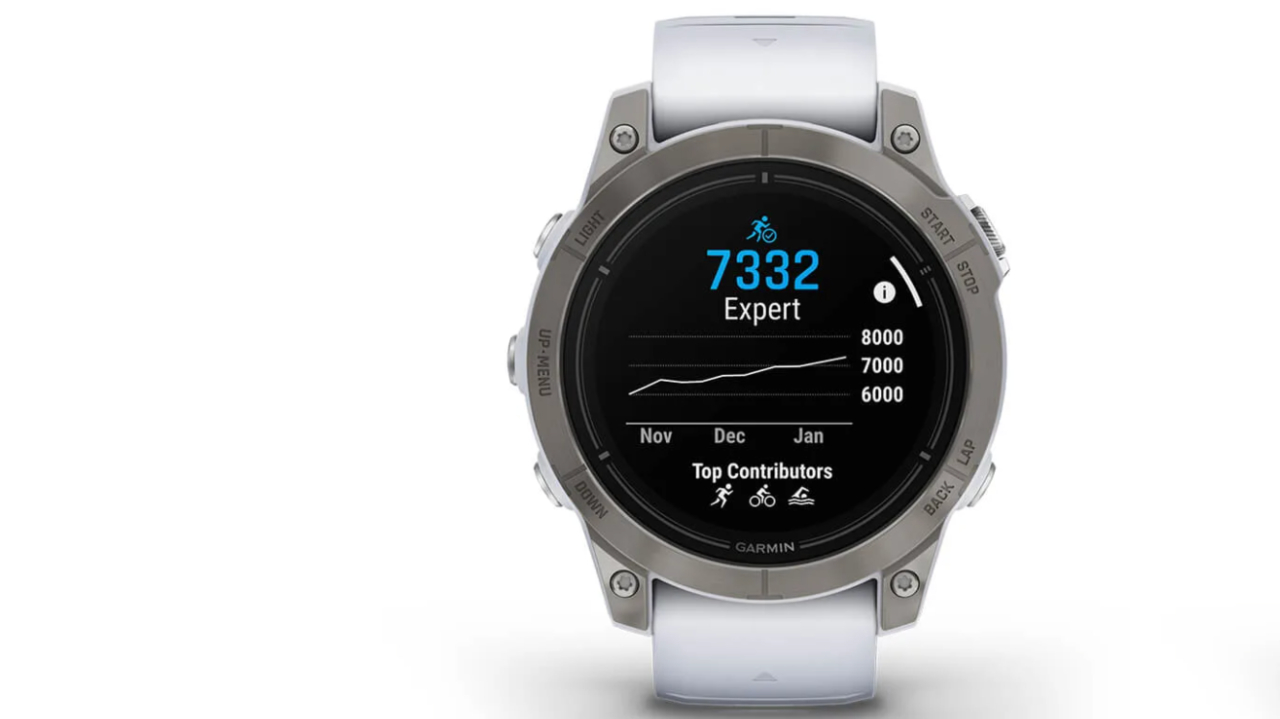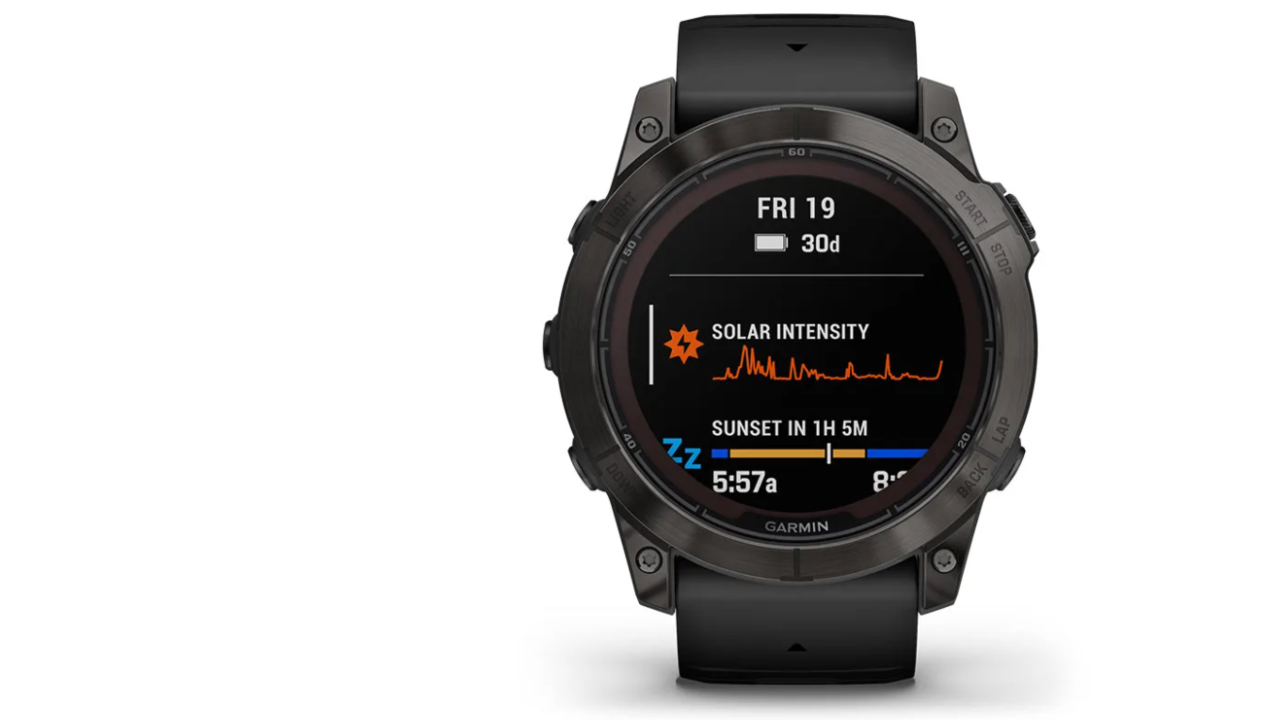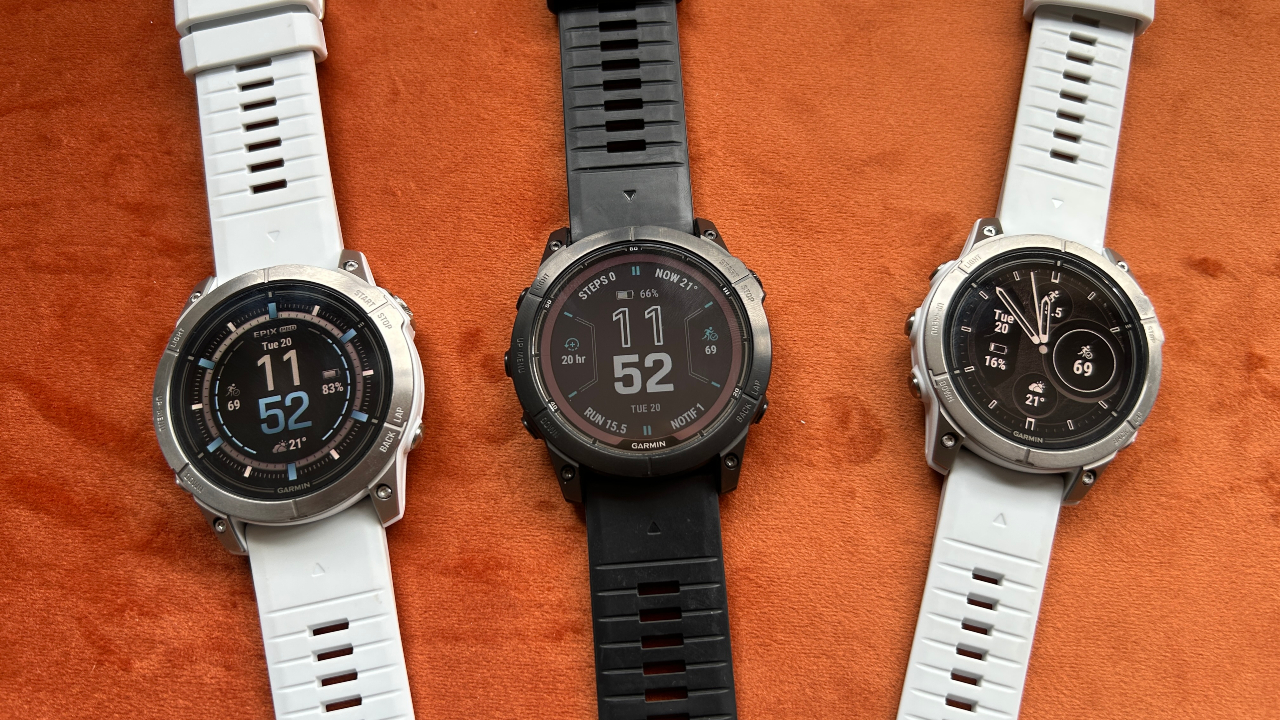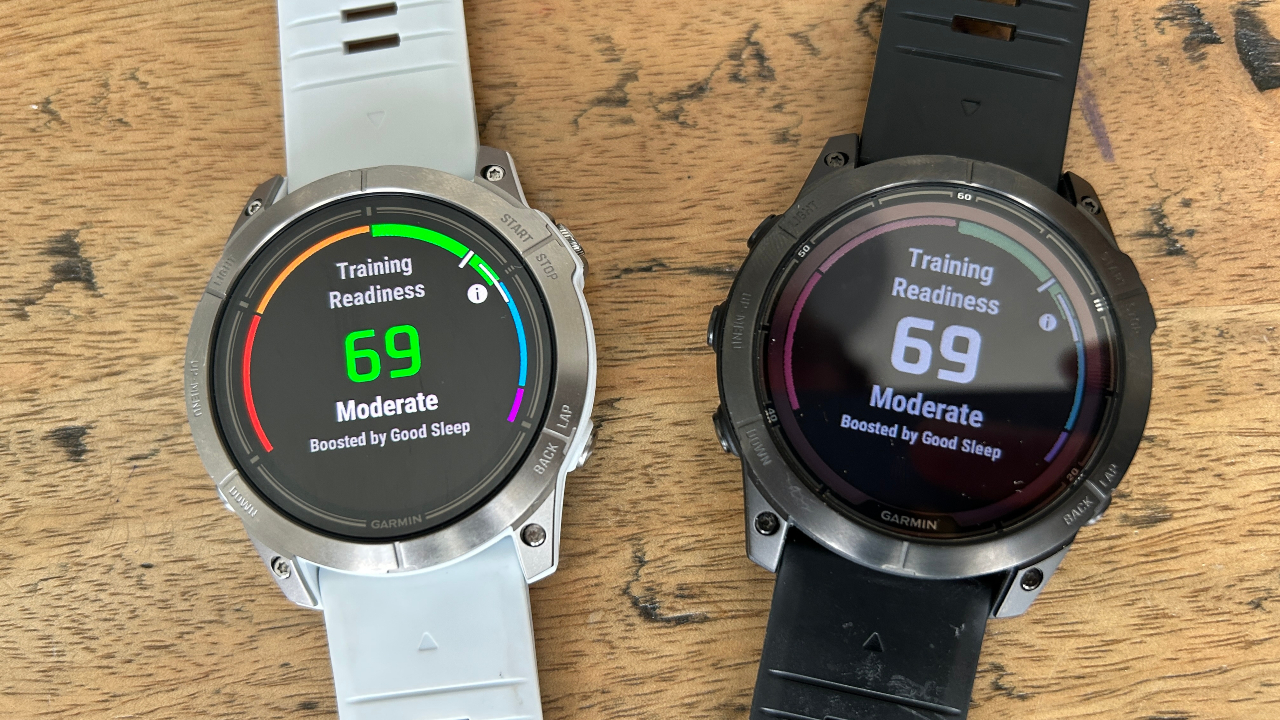Garmin Fenix 7 Pro Vs Garmin Epix Pro
Picking between Garmin’s top sports watches comes down to this: an AMOLED screen versus longer battery life

The new Garmin Epix Pro is a small upgrade on the Epix 2, unless you opt for the impressive battery life of the 51mm model
Pros
- AMOLED display
- Impressive battery life on 51mm
- Red Shift mode
Cons
- Shorter battery life than Fenix
- More expensive than Fenix

It may not be an update that Garmin Fenix 7 owners need to pounce on, but the Fenix 7 Pro features several useful upgrades
Pros
- Cheaper than Epix Pro
- Long battery life
Cons
- Duller display
The Garmin Epix Pro and Garmin Fenix 7 Pro are two of the best sports watches available and, along with the long-lasting Enduro 2, sit at the top of Garmin’s range, offering terrific sports tracking, training analysis and maps, as well as smart features like music and NFC payments.
Picking between the Epix Pro and the Fenix 7 Pro is a simple affair: it mostly comes down to whether you’d rather have the bright AMOLED display of the Epix Pro or the longer battery life of the Fenix 7 Pro. However, the larger 51mm Epix Pro creates a wrinkle in this thinking because it has impressive battery life to go along with that vibrant screen.
Garmin Fenix 7 Pro vs Garmin Epix Pro: Price And Availability
Both watches launched on 31st May 2023 and come at a high price. Across the board the Fenix 7 Pro is a little cheaper than the Epix Pro, and both come in three sizes—42mm, 47mm and 51mm—with steel and titanium options in each size.
The Fenix 7S Pro and 7 Pro steel watches cost $799.99 in the US and £749.99 in the UK, while the 7X Pro costs $899.99/£829.99. The titanium models with sapphire crystal screens cost $899.99/£829.99 for the Fenix 7S Pro and 7 Pro, and $999.99/£929.99 for the 7X Pro.
The 42mm and 47mm steel models of the Epix Pro cost $899.99/£829.99, while the 51mm is $999.99/£929.99. The 42mm and 47mm titanium models with sapphire screens are $999.99/£929.99, and the 51mm watch is $1,099.99/£999.99.
If you’re not in a hurry, it’s worth waiting for major sales events because Garmin devices at this end of the scale regularly get three-figure discounts. It’s worth checking Amazon’s Prime Day Garmin deals in July and October, and for Black Friday Garmin deals in November.
Design
All the models in the Epix Pro and Fenix 7 Pro ranges have built-in flashlights and Garmin’s new and improved heart rate sensor, which are the hardware features that differ from the older Epix 2 and Fenix 7 watches.
The key difference between the Epix Pro and Fenix 7 Pro is the screen. On the Fenix there is a transflective memory-in-pixel display with solar panels running around the outside of it to boost the already substantial battery life. On the Epix Pro watches there are AMOLED screens.
On both watches the screen sizes are 1.2in for the smallest watch in the range, 1.3in for the middle one, and 1.4in for the largest watch. The design is essentially identical apart from the different screens.

I’ve found the AMOLED display on the Epix Pro brighter and easier to read than the Fenix 7 Pro’s screen, which isn’t bad, just duller than the AMOLED. The benefit of the AMOLED screen is clear when indoors, under cloud or tree cover, or in dappled light, where it’s easier to see workout stats or the maps on the watch at a glance.
In bright sunlight the transflective screen is just as visible as the AMOLED screen, however, or even slightly more visible, especially if you are wearing sunglasses.
Overall AMOLED is better and brighter, but it comes at the cost of reduced battery life.
Battery Life
It may not be as exciting to look at, but the Fenix 7 Pro’s duller display delivers better battery performance than from the Epix Pro. The Fenix 7 Pro screen is always-on as standard, while choosing between always-on and raise-to-wake makes a big difference in how long the Epix Pro lasts. For the Fenix 7 Pro watches, the solar panels can add substantial amounts of battery life, though you will need a lot of sun to hit the maximum numbers listed, in my experience.
For both watches, the more accurate the GPS mode you use, the shorter the battery life. There is also an Auto Select GPS mode for both that will switch between GPS satellite options, depending on conditions, to save battery life where possible.
| Header Cell - Column 0 | Fenix 7S Pro | Epix Pro 42mm | Fenix 7 Pro | Epix Pro 47mm | Fenix 7X Pro | Epix Pro 51mm |
|---|---|---|---|---|---|---|
| Watch mode | 11 days/14 days solar | 10 days/4 days always-on | 18 days/22 days solar | 16 days/6 days always-on | 28 days/37 days solar | 31 days/11 days always-on |
| GPS-only | 37 hours/46 hours solar | 28 hours/20 hours always-on | 57 hours/73 hours solar | 42 hours/30 hours always-on | 89 hours/122 hours solar | 82 hours/58 hours always-on |
| All-systems GPS | 26 hours/30 hours solar | 21 hours/16 hours always-on | 40 hours/48 hours solar | 32 hours/24 hours always-on | 63 hours/77 hours solar | 62 hours/48 hours always-on |
| All-systems GPS + music | 7 hours | 6 hours | 10 hours | 10 hours | 16 hours | 17 hours |
| Multi-band GPS | 15 hours/16 hours solar | 13 hours/10 hours always-on | 23 hours/26 hours solar | 20 hours/15 hours always-on | 38 hours/41 hours solar | 38 hours/30 hours always-on |
I’ve tested the Fenix 7X Pro, Epix 47mm and Epix 51mm watches, and they largely live up to the battery life as listed by Garmin. With real-world use, running outdoors almost every day, with notifications coming in and the always-on screen enabled on the Epix Pro watches, the Fenix 7X Pro lasted me three weeks on a charge, the Epix Pro 47mm five days, and the Epix Pro 51mm 10 days.
Overall, the Epix Pro 51mm is perhaps the most intriguing watch because it closes the battery life gap on the Fenix models, especially if you set the screen to raise-to-wake mode outside workouts. It is the most expensive model in either range, though, so you pay a premium for that battery/AMOLED combo.
Red Shift Mode

One feature that is available on the Epix Pro but is not on the Fenix 7 Pro is Red Shift mode, which can switch the AMOLED display to use only the color red at night. This can help preserve night visibility and limit the impact the AMOLED screen has on your sleep cycle. This is less necessary with the memory-in-pixel display on the Fenix 7 Pro.
It’s similar to features available on smartphones and laptops, but given the relatively small display of the Epix Pro watches I don’t think they have a considerable impact on sleep. I’ve set the Red Shift mode to come on with the watches once sleep mode is engaged, but it’s not a feature I’d miss.
Sign up for workout ideas, training advice, reviews of the latest gear and more.

Nick Harris-Fry is a journalist who has been covering health and fitness since 2015. Nick is an avid runner, covering 70-110km a week, which gives him ample opportunity to test a wide range of running shoes and running gear. He is also the chief tester for fitness trackers and running watches, treadmills and exercise bikes, and workout headphones.
